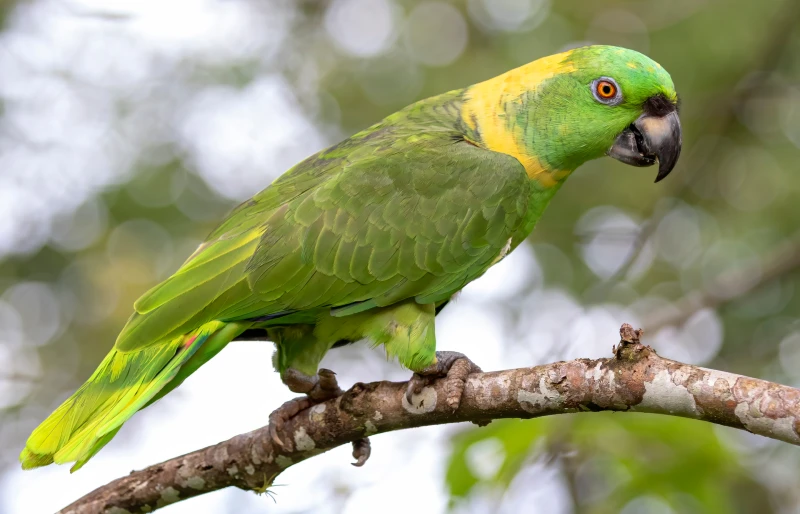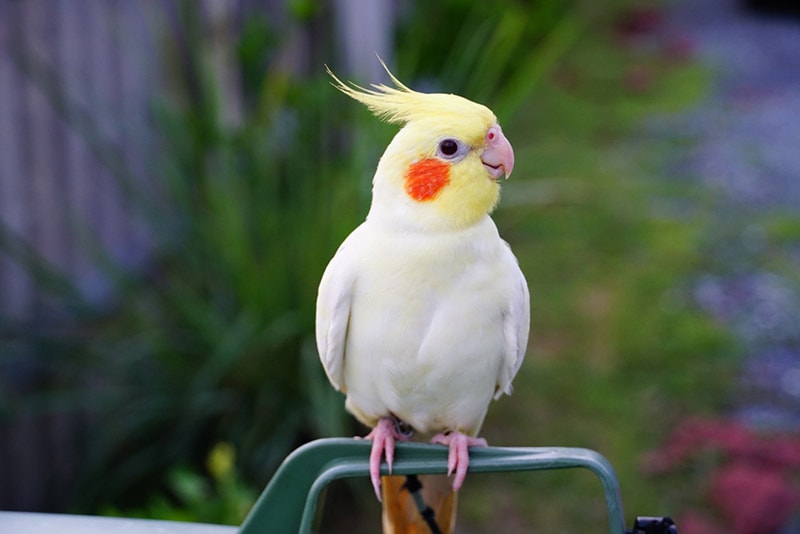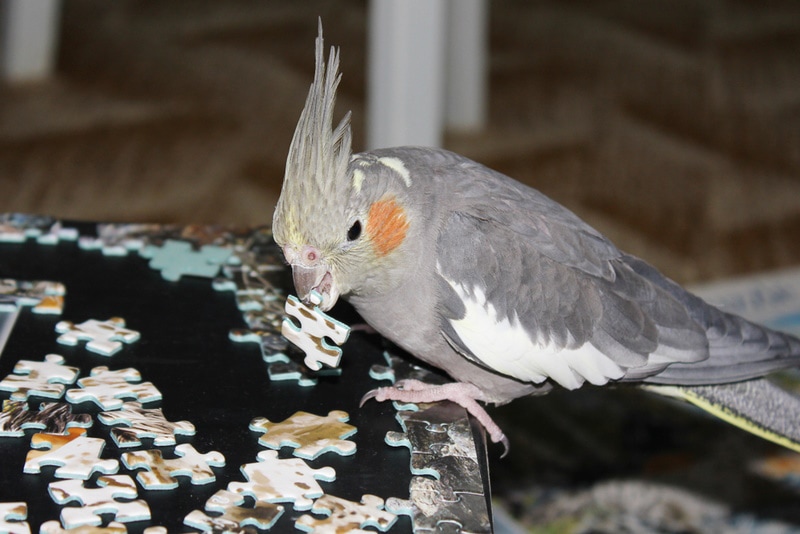Why Do Parrots’ Eyes Dilate When They Talk? Vet Approved Facts & FAQ
By Jordyn Alger
Updated on
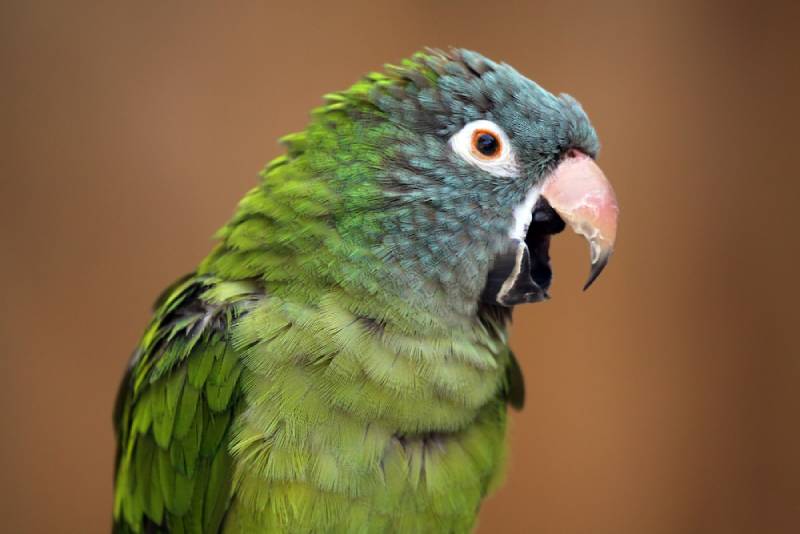
Click to Skip Ahead
Parrots have peculiar quirks that their owners sometimes struggle to understand. Among these idiosyncrasies is the tendency to dilate their eyes when they talk. This behavior is known as eye pinning and is largely regarded as a form of communication. So, when your parrot talks, they may dilate their eyes as a form of body language.
However, what does parrot eye pinning communicate? How can you better understand your parrot’s body language, and when can you decide if your pet needs to see a vet? In this article, we will get to know more about parrot eye-pinning, as well as some common eye disorders that you should watch out for.
Why Do Pupils Normally Dilate?
In normal situations, the pupil opens (dilates) or constricts (closes) to control the amount of light that enters the eye. In dark conditions, the pupil dilates to allow more light to reach the back of the eye, and in bright light, it constricts to prevent damage to the retina.
This can also happen in response to stress. If an animal feels threatened, adrenalin can cause the pupils to dilate, as part of a “fight or flight” response.

What Does Parrot Eye Pinning Communicate?
All the way back in 1783, a researcher by the name of Dr Alexander Monro made the observation that parrots appeared to be dilating and constricting their pupils independent of light levels, and that this was in response to aroused states1. In the wild, this may be in response to situations of aggression, or during mating and courtship.
- Excitement: Many parrots use eye pinning to indicate that they are delighted by your presence or are interested in what they observe. It is usually a sign that they enjoy the subject of their attention.
- Stress: Parrots may constrict and dilate their pupils to convey distress over a situation or environment. Try and determine the source of their stress and remove it from their surroundings to help them settle down.
Now that you know the two main reasons behind eye pinning, you can learn to distinguish between them. Excitement and stress can be difficult to tell apart since they can both make your pet agitated. Luckily, you can use other body language clues to determine what your parrot is feeling.
Understanding Your Parrot’s Body Language
Your parrot uses more than just eye-pinning to communicate their feelings. By learning the other body language cues that your pet displays, you can learn to understand them.
Excitement
In addition to eye pinning, an excited bird may flap their wings and bob their head. Their feathers will remain smooth, and they will not attempt to lean or lunge away from you when you approach. Excited parrots typically enjoy being petted as well. Most notably, your parrot will be eager to talk when you are around.

Stress
The most obvious sign that a bird is stressed is if their feathers are puffed. Parrots who puff out their feathers are attempting to make themselves appear larger than they really are, which is a clear sign that they feel threatened.
Other indications of stress include tail flaring, tail fanning, growling, and raising/lowering their crest. Some birds even scream or bite. If you are the source of your parrot’s stress, you may notice them attempting to get away from you when you approach.
Importance of Your Parrot’s Eyes
Your bird’s eyes serve a valuable role in non-verbal communication, but of course, that’s not all they do. Parrots rely on exemplary vision in the wild to locate food, avoid collisions with objects or other birds whilst flying at speed, as well as evade predators and find mates. Parrots, along with most birds, can see four different color wavelengths: blue, green, yellow, and ultraviolet, and have excellent vision during the day. Their night vision, however, is quite limited, which is why, apart from two species, all parrots are diurnal (only active during the day).
Common Eye Disorders
Conjunctivitis is a common eye disorder that is most often caused by bacteria. Parrots with conjunctivitis often have red, swollen eyelids and sensitivity to light. Conjunctivitis should be dealt with promptly, as it can rapidly lead to ulceration or infection of deeper structures. In parrots, conjunctivitis often accompanies upper respiratory infections.
Another eye disorder to watch out for is uveitis. Uveitis is an inflammation of the inner structure of the eye. If not treated quickly, this condition may make your parrot prone to cataracts, even blindness.
Cataracts are another issue that pet parents should be aware of. There are many reasons why a parrot develops cataracts, one of them being constant exposure to artificial lighting. Other causes include insufficient vitamin E in their diets, and various infections.
Treating and Preventing Eye Disorders
If you notice signs of an eye disorder in your parrot, your first step should be to consult your vet. Prompt treatment is essential to guiding your parrot to a speedy recovery. Depending on the cause of your pet’s eye issues, your vet can prescribe antibiotic eye drops or other medication. Follow your vet’s instructions carefully when using these medicines to ensure you provide your parrot with the best care possible.
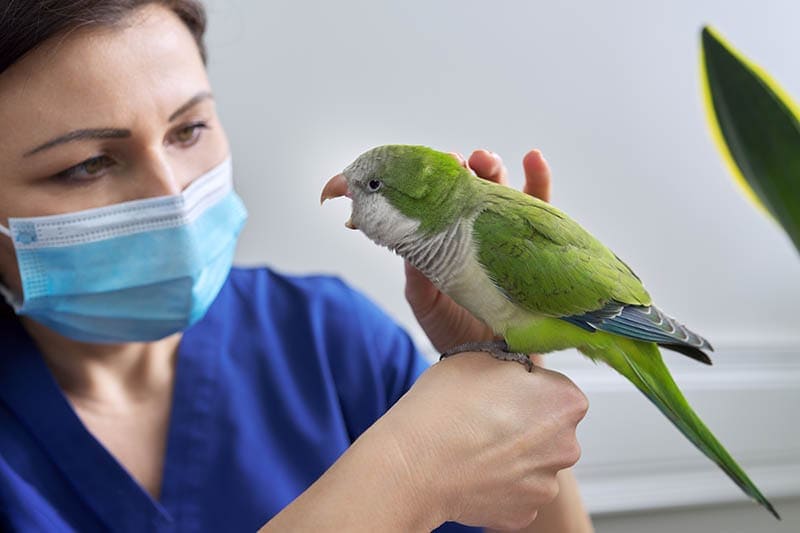
Frequently Asked Questions
Should I Take My Parrot to the Vet for Eye Pinning?
Eye pinning appears strange to humans, who do not have the ability to expand and constrict their pupils voluntarily. However, this behavior is completely normal and does not indicate a health problem.
What Other Ways Do Parrots Communicate?
Parrots may use physical movements to communicate, such as head bobbing, tail wagging, or tail flaring. They may also make sounds like beach clicking, chattering, or growling. By observing the non-verbal cues your bird sends you, you can decipher the feelings or needs they are trying to communicate.
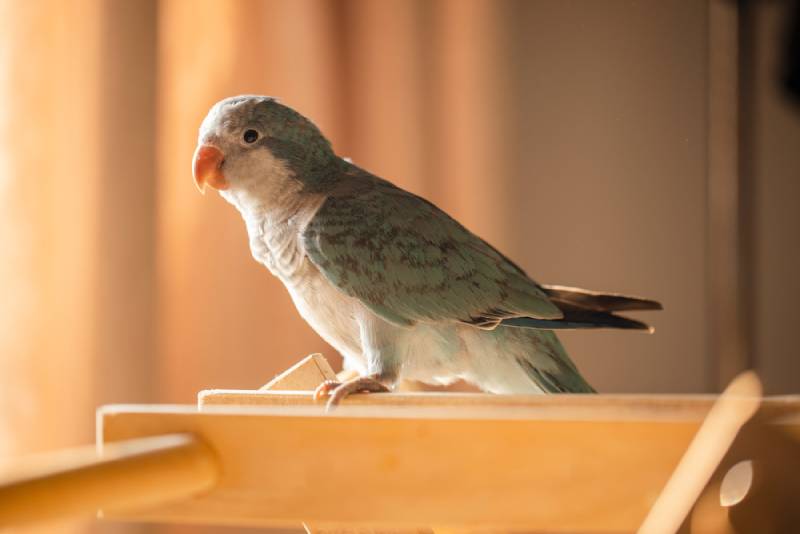
What Body Language May Indicate a Health Issue?
Head shaking, screaming, or picking at their skin can all be signs of a health issue, especially if done excessively. You should also watch out for frequent wing flapping, which may indicate that your parrot cannot keep their balance.
How Do I Prevent Vitamin E Deficiency in My Parrot?
Most parrot pellet mixes will ensure that your pet is receiving enough vitamin E. If you are concerned that your feathered friend is not getting enough of this essential vitamin, there are a couple of ways to boost their levels.
- Supplements: there are a number of powders, pastes and oils that you can add to your parrot’s diet to make sure they are getting enough vitamin E. However, they can be quite potent, and we would recommend consulting with your vet or avian expert before adding supplements to your pet’s food.
- Foods: collard greens, spinach, sunflower seeds, apples, pears and mango are all great sources of vitamin E that your parrot will love.
Final Thoughts
Parrots are unique creatures with all sorts of interesting behaviors and quirks, but these eccentricities are also what make them special. If you notice your parrot is eye pinning, you don’t need to stew in confusion for too long. Observe your parrot’s other body language cues to determine whether they feel stressed or excited.
If they are feeling stressed, you can help your feathered friend by removing the source of their stress. If they’re excited, there is a significant chance that you are the source of their happiness.
Featured Image Credit: mlorenz, Shutterstock



